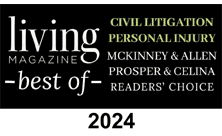Staying Safe in Bad Weather When You are Riding a Motorcycle or Bike
One of the nice things about owning a motorcycle or a bicycle is the fact that you are never really dependent on public transit, even when the weather is bad. That fact alone can motivate people to keep on biking, no matter what the weather conditions are like.
During the wet, early spring months, you may not want to hang up your bicycle or tuck your motorcycle into storage, but you do need to take some additional safety precautions while you are on the road.
Why do these safety rules apply to both modes of transportation?
Bicycles and motorcycles may be vastly different in many ways, but they do share a few common factors. Among the most significant: Both bikers and cyclists are very vulnerable to serious injuries. Neither have even the limited protection that a vehicle's sides, roof, seatbelt and airbags offer in a wreck.
You need to do everything in your power to avoid accidents, and early spring weather can prove especially challenging. Here are some precautions you can take to protect yourself:
1. Get the right gear for your bicycle or motorcycle.
You may not realize just how valuable the proper mudguards can be until you are trying to cycle your way through the slush and grit on the roads. Your mudguards can help keep your tires from slipping on the road.
You also need good grips on your handlebars and the right gloves to keep your fingers from slipping around in the cold. In between trips, take the time to clean off your bike so that you don't end up with corroded brakes or muck in your gears.
2. Go out of your way to be visible to other people.
There is a phenomenon called "inattentional blindness" that makes it harder for drivers — even the ones who are not distracted by their cellphones, coffee cups or radio — to see bicycles and motorcycles on the road. Because they haven't trained their mind to look for you, drivers in passenger vehicles can essentially look right through you.
You counteract inattentional blindness by going out of your way to be notable. Neon gear, reflective arm and leg bands, a working headlight on your handlebars, and a taillight on your seat post can make it harder for a driver to ignore you. This is particularly important to do when gray weather is making everything (including your vehicle) fade into the background.
3. Consider switching out your vehicle or equipment.
Carbide-studded tires might be a good investment in the winter and early spring months because they increase the amount of rubber that makes contact with the bare road — even when ice and snow are on the ground. Bikers of all kinds often swear by them.
You may also want to switch out the bicycle or motorcycle you are using for the season for something a little fatter and heavier. Fat bikes (of both kinds) have bigger tires — and bigger tires mean that your wheels stay on the road better.
4. Remember that defensive driving changes by the season.
You already know that you need to make eye contact with drivers and watch for vehicles making right turns as if you weren't there. However, early spring also means being aware of the fact that kids are in school, so buses are all over. So are tired, harried parents who may not be focused on the roads.
When possible, avoid school zones, especially during drop-off and pick-up times. Another route is always safer. Avoiding rush hour on the road may not be possible, but try to pick your route carefully so that you don't hit the worst part of traffic. If snow is piled up on the side of the road, forcing you into the main part of the lane, stay conscious of the vehicles around you.
What else should you keep in mind about biking in bad weather?
Despite all of your precautions, you only control part of the equation when it comes to your safety. You can't do anything about all of the drivers out there who are distracted, too tired to be behind the wheel or just unwilling to share the road. As the "guy on the bike," you are always the one that's at a disadvantage in an accident and the person most likely to be seriously hurt.
If you are injured by a vehicle while you are biking or riding your motorcycle, find out how we can help you obtain a full and fair settlement for your losses and also minimize your medical expenses.



















 ON
ON
